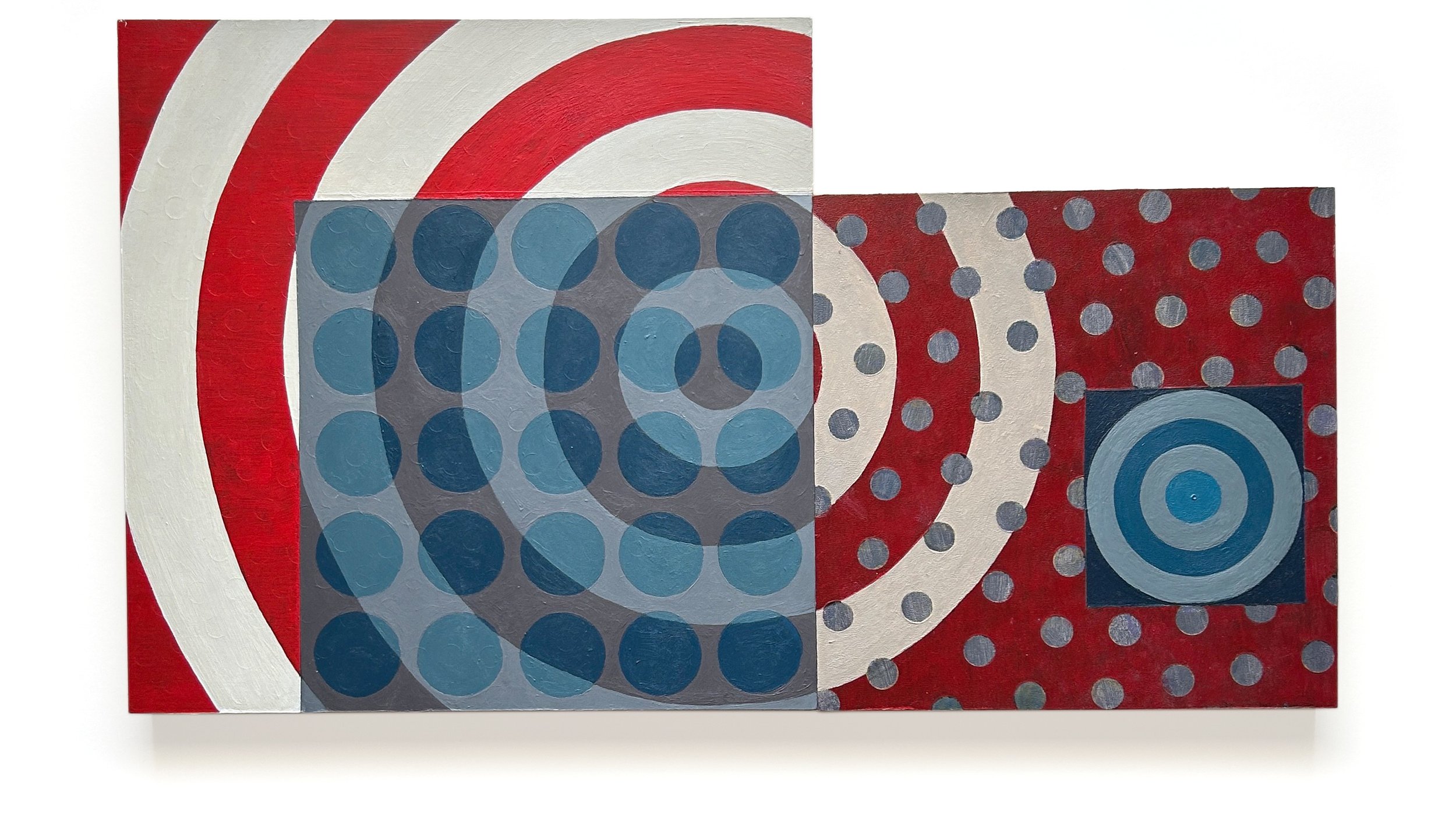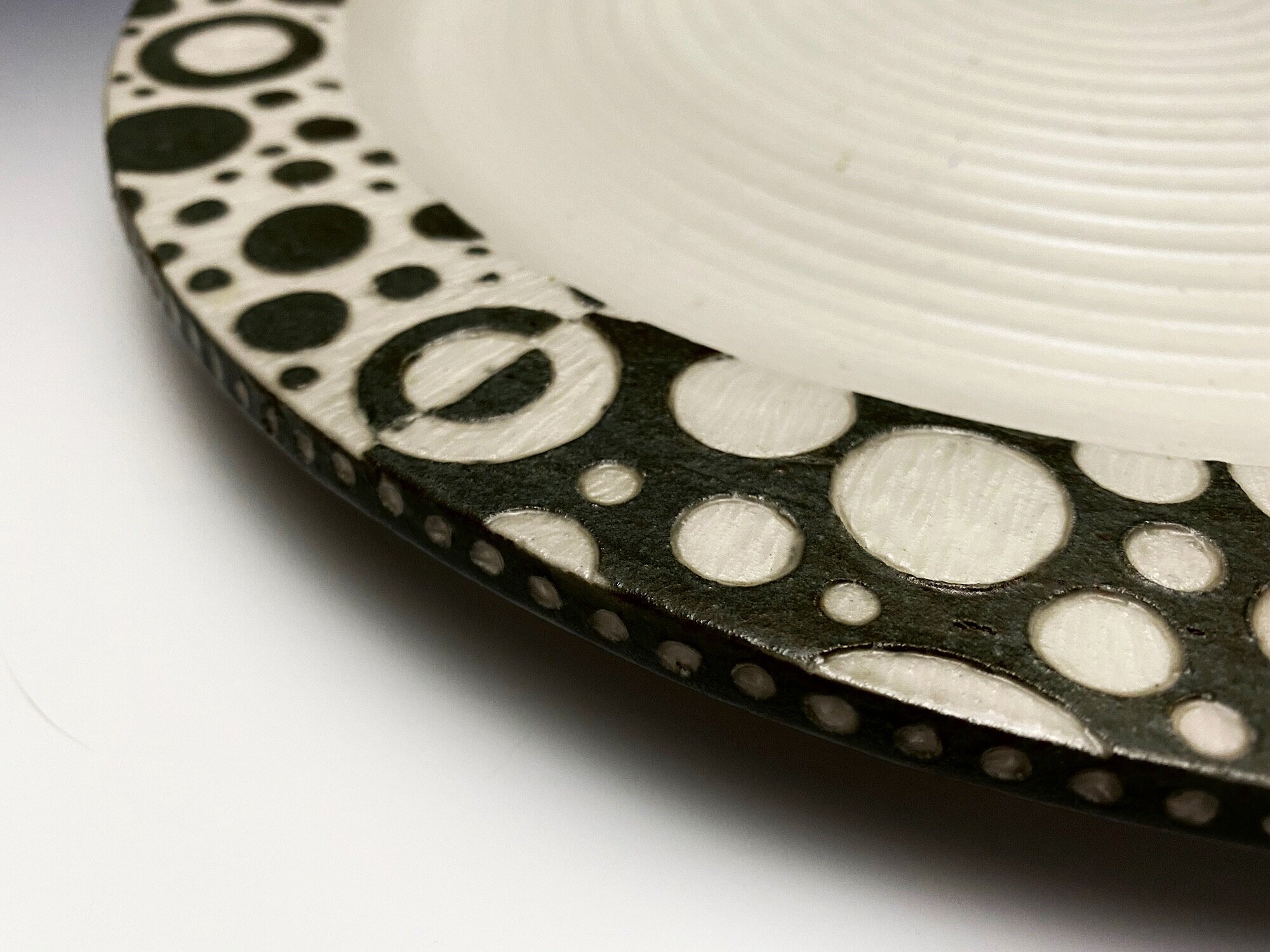Process
Bringing the vision to life.
The painting process
For me painting is a very difficult endeavor…but also a very rewarding one. I’m addicted to the process and here’s why.
in my personal life I very much like to plan ahead. Not so in my painting. There it’s exciting to start without preconceived ideas or drawings. I do use recurring elements - like circles, stripes & checkerboards - but I recombine these in different ways each time - searching for something surprising to happen that I couldn’t have planned.
I love the way acrylic paint behaves. It’s the perfect medium for my abstract paintings because it dries quickly, making it easy to repaint over and over again. Often my painting’s composition changes drastically before it’s completed.
Acrylics also give me immediate control over color. After a minute or two of drying time, I see exactly what a hue looks like in its surroundings, and if I don’t like the result I can overpaint til I get exactly what I want. The right color, for instance, can give the effect of transparency. Sometimes I purposely choose colors I don’t like and combine them with other colors I don’t like, to get beyond my biases and discover new harmonies and discordances.
Techniques which come from my background as a screenprint artist influence my painting process. For instance, I use stickers and tape to mask areas before painting and then remove the mask to reveal layers beneath. Patterns build up as a result, but I’m looking for something in addition—a sense of depth in the flat painting surface. Where shapes appear to float on top, or where it seems we’re looking through openings at something further back.
Another critical choice that affects my process is that I paint simultaneously on several separate panels. They may gradually combine to form one continuous rectangle or shape, or they may remain separate but dialogue with each other. Sometimes new panels get added to resolve the composition, or a panel may suggest a different plane from the rest and enhance the sense of layers and deeper space.
When a painting is close to being finished but something is still missing, I can be hesitant to overpaint complex areas that would be hard to reproduce. That’s when I use the computer. I bring a photo of the piece into a graphics program, where I can add layers to try out ideas. When I get what I want I’ll go paint that onto the piece. If it’s difficult to achieve the quality of new lines or shapes I see on the screen, I may get a computer printout and trace it before painting.
For all these reasons I look forward to the challenge of every new painting. It wouldn’t be thrilling if it were easy.
The ceramics process
My starting point is to create white porcelain forms on the potters wheel, and my goal is to find shapes that lend themselves to particular surface treatments. Later they're painted with patterns. So, for instance, creating a curved shape with edges will bend a pattern to give it an optical sense of movement. The design is painted with underglaze, but only after the raw piece has been fired at low temperature and is less fragile, and the final step is to spray with clear glaze and fire a second time at high temperature, which makes the surface nonporous.
A form is created on the wheel…
…next it’s hand painted with underglaze…
…finally it’s glazed & put through final firing.
Sgraffito patterning
The term “sgraffito” comes from an Italian word meaning “to scratch”. The artist paints a layer of liquid colored clay, called slip, onto a freshly made ceramic piece, then scratches through to reveal parts of the underlying clay body. Susan uses colored slips over white porcelain clay.
Get in touch
Questions, inquiries, or just want to find out more?







